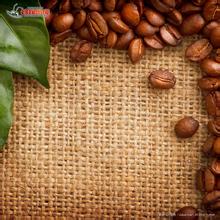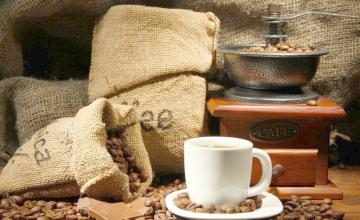Light sweet Cuban Crystal Mountain Coffee Flavor introduction to Fine Coffee beans in Manor
The area is 109884 square kilometers [3], of which Cuba is 104555.61 square kilometers and the surrounding islands and reefs are 3126.43 square kilometers.
Cuba is located in the northwest of the Caribbean Sea, facing Haiti to the east, 140 kilometers to the south from Jamaica and 217 kilometers to the north from the top of the Florida Peninsula.
Cuba, composed of more than 1600 islands such as Cuba and Youth Island (former Pine Island), is the largest island country in the West Indies.
Topography
Cuba's coastline is about 6000 kilometers long, most of which are flat, with mountains in the east and middle and hills in the west, and most of the territory has a savanna climate. [6]
In addition to Cuba, it also includes more than 1600 surrounding islands of different sizes. The islands are made up of five islands: Savannah, Camag ü ey, Colorados, Queen's Garden and Canareos. Youth Island (also known as Pine Island), located in Batahuano Bay, is the only larger island along the coast. The total length of the coastline is 6073 kilometers. Most of the island of Cuba is flat, with mountains accounting for only 1x4 of the total area. There are three major mountains in the country: the Guaniganico Mountains, the Eskambria Mountains and the Maestra Mountains (the highest mountain range in Cuba, of which Mount Turchino is 1974 meters above sea level, the highest peak in Cuba).
Hydrology
The longest river in Cuba, R í o Cauto, is 370km long. [1] Cuba has more than 200 rivers and thousands of streams, most of which run north-south, so the current is shallow and fast. The Cato River, which flows east-west to the north of the Maestra Mountains, is the largest river in Cuba, but it is only 370 kilometers long and is the only navigable river in Cuba. Cuba's coastline is tortuous, generally steep in the north and flat in the south, with many good ports. Almost all of them are bays in the shape of pockets and bellies, which are very beneficial to shipping. The important bays are Havana Bay, Nippe Bay, Guantanamo Bay, Santiago Bay, Sienfugos Bay, Onda Bay and Matansas Bay and so on. [7]
Climate
Most of Cuba has a tropical rain forest climate, only the southwestern coastal leeward slope has a savanna climate, with an annual average temperature of 25 ℃. Except for a few areas, the annual precipitation is more than 1000 mm.
In 1748, coffee was introduced into Cuba from Domiga, and Cuba began to grow coffee ever since. With fertile land, humid climate and abundant Rain Water, Cuba can be called a natural treasure land for coffee cultivation. The suitable natural conditions provide a favorable natural environment for the growth of coffee trees, and coffee is well planted and developed here. In Cuba, the cultivation of coffee is regulated by the state. The best coffee growing area in Cuba is located in the Central Mountains. Because this area not only grows coffee, but also produces quartz, crystal and other precious minerals, it is also known as Crystal Mountain. At present, Crystal Mountain Coffee is synonymous with top Cuban coffee. A prominent feature of Crystal Mountain Coffee is its large granule and bright green color of coffee beans.
In Cuba, most of the coffee beans are picked by hand. Coffee beans are picked about every half a month during the ripening period. During or after picking, coffee beans are classified and those immature and bad beans are removed to ensure the quality of the coffee. Cubans usually deal with coffee beans in two ways-tanning and washing. Tanning is the simplest, cheapest and most traditional way to treat coffee, which is to let the coffee fruit dry in the sun but not ferment. The general drying time is about four weeks. The washing rule makes the aroma of the fruit more into the coffee beans, thus adding a crude mineral fruit flavor to the coffee. Cuba has a fertile land, humid climate and abundant Rain Water, which can be called a natural treasure land for coffee cultivation. The suitable natural conditions provide a favorable natural environment for the growth of coffee trees. Coffee is well cultivated and developed here, and the best coffee growing area in Cuba is located in the Central Mountains. Because this area not only grows coffee, but also produces quartz, crystal and other precious minerals, it is also known as Crystal Mountain.
Crystal Mountain is geographically adjacent to the Blue Mountains of Jamaica, with similar climatic conditions and flavor similar to Blue Mountain Coffee, comparable to the Blue Mountains of Jamaica. It is also known as "the Blue Mountain of Cuba" and the purest Crystal Mountain Coffee is the famous local Cubita in Cuba. It slightly contains wine-like bitterness and a touch of sweetness, and even a hint of tobacco, meticulous and smooth, fresh and elegant, almost perfect. It is known as the "noble and elegant princess" in coffee. The general taste of coffee is as strong as heavy metal music, while the taste of Cubita is as delicate and balanced as the softness of country minor. It will take you out of the restless urban hustle and bustle and come back to the quiet countryside to reflect the casual and comfortable side of life.
Crystal Mountain Coffee is the top representative of Cuban coffee, while Cubita is the top representative of Crystal Mountain Coffee. Cubita Amber is the coffee for the celebration of the 50th anniversary of the establishment of diplomatic relations between China and Cuba, and the coffee for the Shanghai World Expo-Cuba Pavilion. Noble women and elegant men are always infatuated. The same is true of Cubita. If you take a shallow taste, you will be deeply attracted by its taste and intoxicated with it, making people unable to extricate themselves.

Important Notice :
前街咖啡 FrontStreet Coffee has moved to new addredd:
FrontStreet Coffee Address: 315,Donghua East Road,GuangZhou
Tel:020 38364473
- Prev

Al du Mara
Mexico: Aldura coffee flavor taste characteristics: soft aroma, mellow and comfortable, with wine aroma. Mexico has a long history of producing coffee and is currently one of the most important coffee producing countries in the world. The coffee produced in Mexico is naturally called Mexican coffee. About 5 ℃ of the total area of Mexico are plateaus and mountains, with an annual average temperature of 2527 ppm.
- Next

Panamanian Kasha flavor Panamanian Kasha coffee
The finest coffee in Panama (Panama) is grown in the west of the country, near Costa Rica and the Pacific Ocean. The Boquet district of Chiriqui province is the most famous for its coffee, as well as Wakan, Santa Clara and Kendra. Other areas include David, Remacimeinto, Bugaba and Tolai (T).
Related
- Detailed explanation of Jadeite planting Land in Panamanian Jadeite Manor introduction to the grading system of Jadeite competitive bidding, Red bid, Green bid and Rose Summer
- Story of Coffee planting in Brenka region of Costa Rica Stonehenge Manor anaerobic heavy honey treatment of flavor mouth
- What's on the barrel of Blue Mountain Coffee beans?
- Can American coffee also pull flowers? How to use hot American style to pull out a good-looking pattern?
- Can you make a cold extract with coffee beans? What is the right proportion for cold-extracted coffee formula?
- Indonesian PWN Gold Mandrine Coffee Origin Features Flavor How to Chong? Mandolin coffee is American.
- A brief introduction to the flavor characteristics of Brazilian yellow bourbon coffee beans
- What is the effect of different water quality on the flavor of cold-extracted coffee? What kind of water is best for brewing coffee?
- Why do you think of Rose Summer whenever you mention Panamanian coffee?
- Introduction to the characteristics of authentic blue mountain coffee bean producing areas? What is the CIB Coffee Authority in Jamaica?

